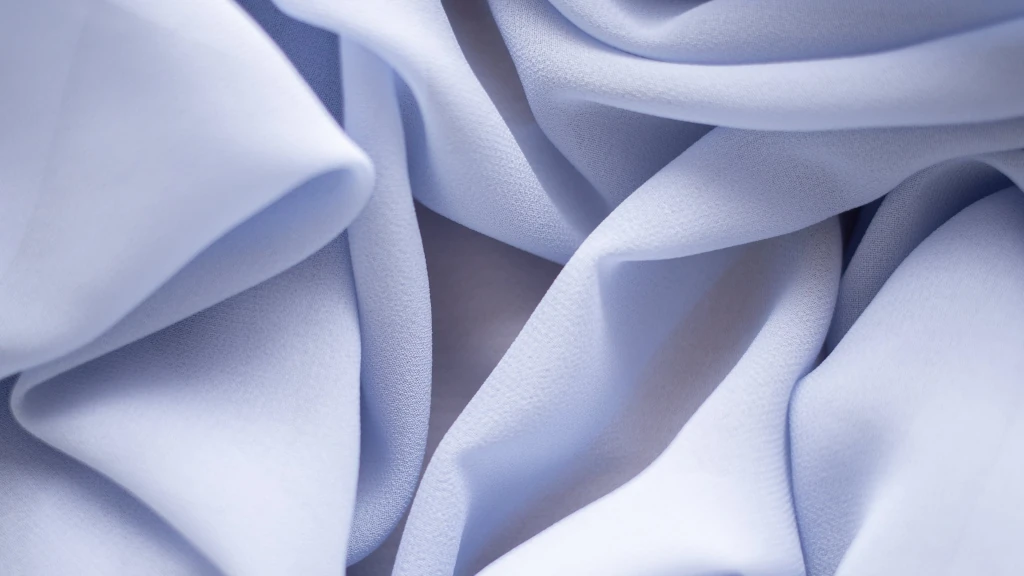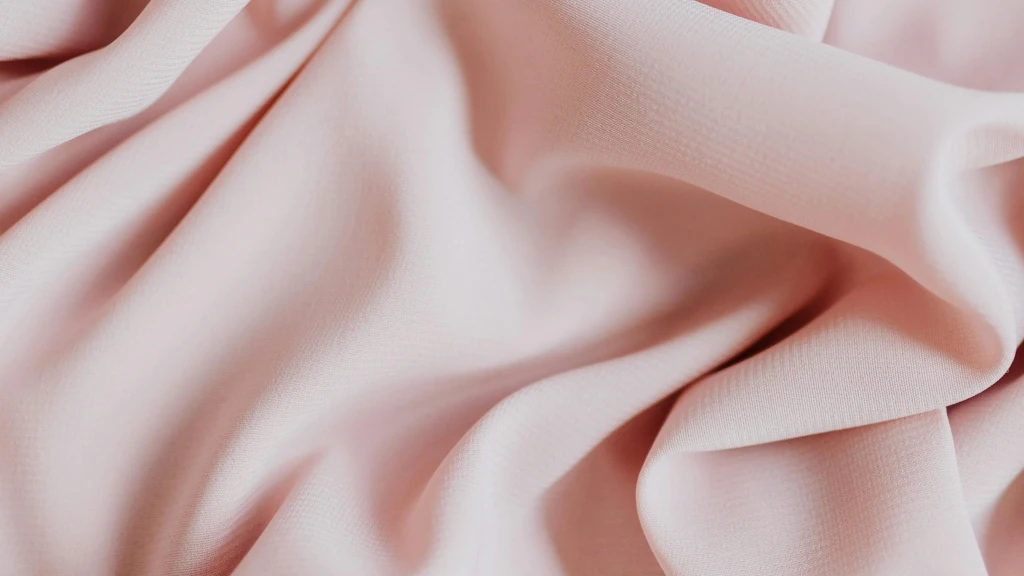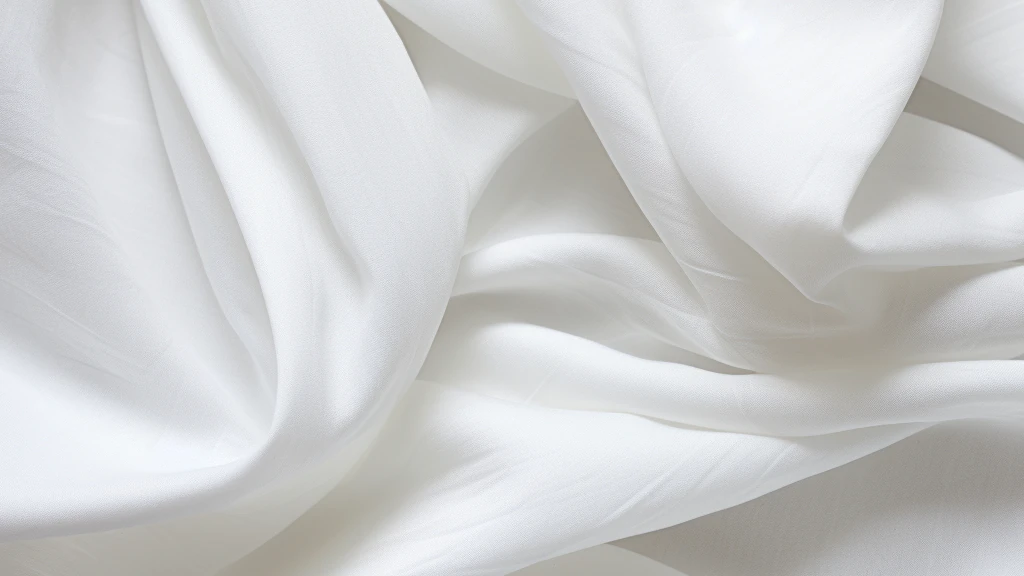Plant-Based and Synthetic Fiber overview
In an era where sustainability and environmental consciousness are at the forefront of our decisions, the choices we make in the fabrics we wear play a significant role. This article explores some characteristics of the most used plant-based versus synthetic fibers, shedding light on the ecological footprint, recycling challenges, and health benefits associated with these materials.
We’ll start with a table overview of the most used and most common fibers. We shed a light on where and how it is sourced, and information about it’s production. We will also give you some cons and pros for each fiber and additional facts. In terms of use and after-life, obviously this always depends on several factors, as how the fibers are processed during production – i.e. what chemicals are used, how it is dyed and if fibers (plant based with synthetics) are mixed. Therefore we provide a general overview by keeping the fiber in mind in its original version – i.e. organic cotton treated with minimal chemicals will therefore have a low impact on the environment and biodegrade faster. If you are looking for specific numbers on the life cycle analysis including the environmental footprint of the fibers, check out this article by 8billiontrees.com
| Fiber | Type | Sourcing | Top 3 Countries | Production | After-Life | Microplastic Shedding due Use | Environmental Impact (Water, Chemical, CO2) | Advantages | Disadvantages | Additional Facts | Common Uses |
|---|---|---|---|---|---|---|---|---|---|---|---|
| Fur | Animal-Based | Obtained from the skin and hair of animals, typically mammals like mink, fox, or rabbit. | USA, Italy, China | Requires specialized tanning and processing. | Challenges in biodegradation; ethical concerns. | Low | High water usage, high chemicals, high CO2 emissions | Natural, luxurious appearance. | Controversial due to ethical concerns with animals. | Fur is often used in high-end fashion | Apparel, Accessories |
| Leather | Animal-Based | Obtained from the skin of animals, typically cattle. | India, China, USA | Involves tanning and processing of animal hides. | Challenges in biodegradation; ethical concerns. | Low | High water usage, high chemicals, high CO2 emissions | Durable and develops a patina over time. | Controversial due to ethical concerns with animals. | Leather is widely used in apparel, accessories, and furniture. | Apparel, Accessories, Furniture |
| Silk | Animal-Based | Produced by silkworms during the cocoon stage. | China, India, Brazil | Involves sericulture, harvesting, and processing silk threads. | Biodegradable and can be composted. | Low | Low water usage, minimal chemicals, lower CO2 emissions | Soft, smooth, and hypoallergenic. | Involves silk farming practices with silk worm animals. | Silk is known for its use in high-end fashion and fine textiles. | Textiles, Apparel, Accessories |
| Wool | Animal-Based | Obtained from the fleece of sheep. | Australia, New Zealand, China | Requires grazing land and water for sheep. | Biodegradable and can be composted. | Low | Moderate water usage, minimal chemicals, moderate CO2 emissions | Natural insulator and breathability. | Environmental impact of grazing land. | Wool is commonly used in winter clothing for its insulation properties. | Textiles, Apparel |
| Bamboo | Plant-Based | Sourced from bamboo plants. | China, India, Vietnam | Biodegradable and fast-growing. | Biodegradable but may take time. | Low | Low water usage, minimal chemicals, lower CO2 emissions | Fast-growing and renewable. | Deforestation concerns. Limited recycling infrastructure.* Often combined with Viscose which makes it less sustainble. | Bamboo is known for its sustainability due to its rapid growth. | Textiles, Apparel, Home Furnishings |
| Cotton | Plant-Based | Traditional farming may involve pesticides and fertilizers. | China, India, USA | Water-intensive cultivation. | Can be repurposed for various applications or composted. | Moderate | Moderate water usage, moderate chemicals, moderate CO2 emissions | Widely available and affordable. | High water and pesticide use. | Cotton has a 22% market share. | Textiles, Apparel, Home Furnishings |
| Hemp | Plant-Based | Grows with minimal water and pesticides. | China, Netherlands, Romania | Requires less water and land compared to cotton. | Biodegradable and can be composted. | Low | Low water usage, minimal chemicals, lower CO2 emissions | Lowest environmental impact. | Limited recycling infrastructure.* | Hemp requires 50% less water than cotton during cultivation. | Textiles, Apparel, Accessories |
| Linen | Plant-Based | Requires less water and pesticides compared to cotton. | France, Belgium, Netherlands | Fewer chemicals used in processing. | Can be recycled into paper or composted. | Low | Low water usage, minimal chemicals, lower CO2 emissions | Contributes to a more sustainable fashion industry. | Limited recycling infrastructure.* | Linen is commonly used in summer clothing due to its breathability. | Textiles, Apparel, Home Furnishings |
| Lyocell | Plant-Based | Made from sustainably sourced wood pulp. | Austria, USA, China | Closed-loop production process reduces chemical usage. | Biodegradable and compostable. | Low | Low water usage, minimal chemicals, lower CO2 emissions | Soft, breathable. Reduced chemical usage. | Limited recycling infrastructure.* Controlled and certified, however affects deforestation. | TENCEL™ Lyocell fibers are produced in a closed-loop process which recovers water and 99.8% of the solvent. | Textiles, Apparel, Bedding |
| Viscose | Plant-Based | Derived from wood pulp, but processing involves many chemicals. | China, India, Indonesia | Chemical-intensive production process. | Biodegradable and can be composted. | Moderate | Moderate water usage, high chemicals, moderate CO2 emissions | Soft and breathable. | Deforestation concerns. | Viscose is commonly used in dresses and blouses for its drape. | Textiles, Apparel |
| Organic Cotton | Plant-Based/Organic | Grown without synthetic pesticides or fertilizers, reducing environmental impact. | India, China, Turkey | Requires less water compared to conventional cotton. | Biodegradable and can be composted. | Low | Low water usage, minimal chemicals, lower CO2 emissions | Reduced environmental impact. | Limited recycling infrastructure.* | Organic cotton emits between 78-91% fewer emissions compared to Polyester and Nylon. | Textiles, Apparel |
| Acrylic | Synthetic | Made from petrochemicals. | USA, China, Taiwan | Energy-intensive production process. | Challenges in biodegradation; may contribute to microfiber pollution. | High | High water usage, high chemicals, high CO2 emissions | Soft and lightweight. | High environmental impact in production. Contributes to microplastic pollution. Environmental impact in production. | Acrylic is often used as a wool substitute in knitwear. | Apparel, Blankets |
| Elastane | Synthetic | Made from petrochemicals. Often blended with other fibers. | USA, China, Japan | Production involves energy-intensive processes. | Challenges in biodegradation; may contribute to microfiber pollution. | Moderate | High water usage, high chemicals, high CO2 emissions | Provides stretch and flexibility. | High environmental impact in production. Contributes to microplastic pollution. Limited recycling options.* | Elastane is commonly used in sportswear and intimate apparel. | Sportswear, Intimate Apparel |
| Nylon | Synthetic | Derived from petrochemicals. | USA, China, South Korea | High energy and water-intensive production. | Challenges in biodegradation; may contribute to microfiber pollution. | High | High water usage, high chemicals, high CO2 emissions | Strong and durable. | High environmental impact in production. Contributes to microplastic pollution. | Nylon has a 54 percent market share. | Textiles, Apparel, Hosiery |
| Polyester | Synthetic | Made from petrochemicals. | China, USA, India | Energy-intensive production process. | Challenges in biodegradation; may contribute to microfiber pollution. | High | High water usage, high chemicals, high CO2 emissions | Versatile and affordable. | High environmental impact in production. Contributes to microplastic pollution. | Polyester is widely used in activewear due to its moisture-wicking properties. | Textiles, Apparel, Sportswear |
| Polypropylene | Synthetic | Made from petrochemicals. | USA, Belgium, China | Energy-intensive production process. | Challenges in biodegradation. | Low | Moderate water usage, minimal chemicals, lower CO2 emissions | Lightweight and versatile. | High environmental impact in production. Contributes to microplastic pollution. Limited recyclability.* | Commonly used in activewear and packaging materials. | Apparel, Packaging |
| Polyurethane | Synthetic | Made from petrochemicals. Synthetic polymer often used with hygienic products. | USA, China, Germany | Produced through various chemical processes. | Challenges in biodegradation. | High | High water usage, high chemicals, high CO2 emissions | Provides stretch and flexibility. | High environmental impact in production. Contributes to microplastic pollution. Limited recycling options.* | Polyurethane is widely used in medical and hygiene products. | Hygienic Products, Stretch Fabrics |
| Spandex | Synthetic | Made from petrochemicals. | USA, China, Taiwan | Energy-intensive production process. | Challenges in biodegradation. | Moderate | High water usage, high chemicals, high CO2 emissions | Good elasticity. | High environmental impact in production. Contributes to microplastic pollution. Limited recyclability.* | Widely used in sportswear and form-fitting garments. | Sportswear, Intimate Apparel |
*While these fibers are recyclable, their level of recycling may not be as established or accessible as it is for more conventional materials. The availability of recycling options can vary by region, demand and advancements in recycling technologies may impact the recyclability of these fibers in the future.
Environmental Impact: Fossil Fuels, Energy, and Chemicals
Fossil Fuels and High Energy Usage
Plant-based fibers, such as organic cotton, hemp, and lyocell, have a distinct advantage over synthetic counterparts like polyester and nylon when it comes to sourcing. The latter heavily relies on fossil fuels for production, contributing to carbon emissions and reliance on non-renewable resources. Organic cotton emits 78-91% fewer emissions compared to polyester and nylon, making it a greener choice.
Tencel, derived from sustainably sourced wood pulp, is produced in a closed-loop process, recovering water and 99.8% of solvents. This contrasts with the energy-intensive production of synthetic fibers, emphasizing the ecological benefits of choosing plant-based options.
Chemicals and Water Usage
Synthetic fibers often involve chemical-intensive processes. Viscose, although plant-based, raises concerns due to the chemicals used in its production, contributing to deforestation. Statistics reveal that vast areas of forests are cleared for viscose production, with approximately 120 million trees felled annually.
Plant-based fibers, on the other hand, generally require less water and fewer chemicals. Hemp, for instance, grows with minimal water and pesticides, providing a more sustainable option for conscious consumers.
Recycling Challenges and Downgrading: Polyester, Nylon, Elastane
While recycling is promoted as an eco-friendly solution, it comes with challenges, particularly in the case of synthetic fibers like polyester and nylon. Recycling these materials often results in downgrading, leading to lower quality textiles.
Moreover, recycled polyester and nylon are commonly sourced from PET bottles, creating rPET. This further emphasizes the need for a circular approach where raw materials, especially in the case of textiles, are recycled back to their original form. Using recycled polyester and nylon for textiles perpetuates a cycle that may compromise quality, keeping plastic in the loop.

Health Benefits of Plant-Based Fibers
Air Circulation and Skin Irritation
Beyond the environmental impact, the choice of fabric also affects our health. Plant-based fibers offer superior breathability and air circulation compared to synthetic counterparts. Natural fabrics like organic cotton and linen allow the skin to breathe, reducing the risk of skin irritation and textile dermatitis.
Synthetic fibers, known for trapping air and sweat, create an environment conducive to skin-related issues. Choosing plant-based options not only contributes to a healthier planet but also ensures better comfort and well-being for individuals.
Conclusion: Making Informed Choices for a Sustainable Future
In conclusion, the choice between plant-based and synthetic fibers goes beyond fashion; it’s a conscious decision that impacts our environment and health. Opting for plant-based fibers reduces reliance on fossil fuels, minimizes the use of harmful chemicals, and promotes a circular economy.
While synthetic fibers may dominate the market, understanding the environmental and health implications empowers consumers to make informed choices. As we strive towards a sustainable future, embracing plant-based fibers emerges as a crucial step in building a more resilient and eco-friendly textile industry.
🔄 #CircularDesign #Sustainability #Cedenu #CircularEconomy #TextileIndustry #DurabilityOverDisposability 🌟
Here are 5 tips on how to contribute to a sustainable, circular economy:
1. Choose Sustainable Products:
Opt for products that are designed for durability, repairability, and recyclability. Look for items made from renewable or recycled materials. By investing in quality, long-lasting products, you reduce the need for frequent replacements and contribute to a circular model.
2. Practice Responsible Consumption:
Be a mindful consumer by avoiding unnecessary purchases and impulse buying. Prioritize needs over wants and consider the lifecycle of products before making a purchase. Choose items with minimal packaging or packaging that is easily recyclable.
3. Embrace Upcycling and Repurposing:
Give a second life to items by upcycling or repurposing them. Get creative with DIY projects to transform old clothes, furniture, or accessories into new and useful items. This not only reduces waste but also adds a personal touch to your belongings.
4. Participate in Recycling Programs:
Properly dispose of recyclable materials by participating in local recycling programs. Sort your waste and recycle items like paper, glass, plastic, and metal according to the guidelines in your community. This helps divert materials from landfills and supports the recycling loop.
5. Support Circular Business Models:
Choose to support businesses that adopt circular economy principles. Look for companies that offer take-back programs, product refurbishment, or recycling initiatives. By endorsing businesses committed to sustainability, you contribute to the demand for circular practices in the market.
FAQ
Q1: What is plastic pollution in fashion?
A: Plastic pollution in fashion refers to the environmental impact caused by the production, use, and disposal of synthetic fabrics such as nylon and polyester. These materials, derived from petrochemicals, contribute to the accumulation of plastic waste in various ecosystems.
Q2: How does plastic pollution affect the environment?
A: Plastic pollution poses a significant threat to the environment, leading to issues like marine pollution, soil contamination, and harm to wildlife. Microplastics shed from synthetic fabrics can enter water bodies, impacting aquatic life and ecosystems.
Q3: Are synthetic fabrics like Nylon, Polyester contributing to plastic pollution?
A: Yes, synthetic fabrics like nylon and polyester contribute to plastic pollution. During their lifecycle, these materials shed microplastics, further exacerbating environmental concerns. For instance, washing a single polyester garment can release thousands of microfibers into water systems.
Q4: What are the alternatives to synthetic clothing materials?
A: Sustainable alternatives to synthetic fabrics include organic cotton, lyocell, hemp, and linen. These plant-based fibers offer eco-friendly options with lower environmental impact and reduced contribution to plastic pollution.
Q5: How can I reduce plastic waste in my wardrobe?
A: To reduce plastic waste in your wardrobe, consider buying clothes made from natural and sustainable fibers. Additionally, opt for second-hand or vintage items, practice conscious consumption, and recycle or upcycle clothing when possible.
Q6: What is circular fashion, and how does it combat plastic pollution?
A: Circular fashion involves designing, producing, and consuming clothing with a focus on sustainability and longevity. It emphasizes recycling, upcycling, and reducing waste, thereby combating plastic pollution by promoting a closed-loop system in the fashion industry.
Q7: What can individuals do to combat plastic pollution in fashion and hygiene products?
A: Individuals can make a significant impact by choosing sustainable and plant-based clothing materials, reducing single-use plastic consumption, and properly disposing of clothing items. Additionally, supporting brands that prioritize eco-friendly practices encourages a shift towards more sustainable fashion.
Q8: Are there regulations to address plastic pollution in the fashion industry?
A: While there is an increasing awareness of the environmental impact of the fashion industry, specific regulations addressing plastic pollution are still evolving. However, some countries and regions are implementing initiatives to encourage sustainable practices, and consumers can advocate for more stringent regulations to reduce plastic pollution in fashion





